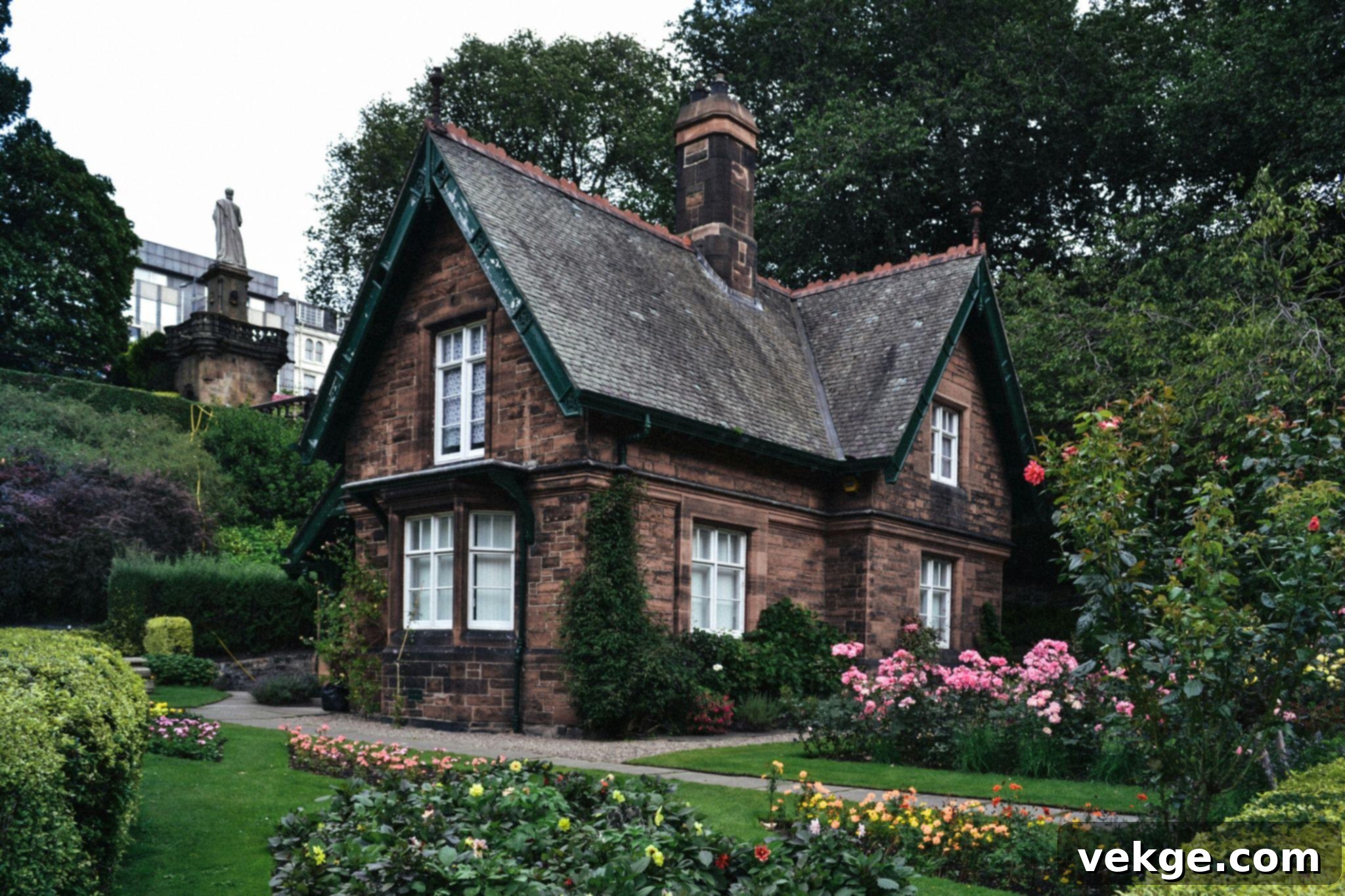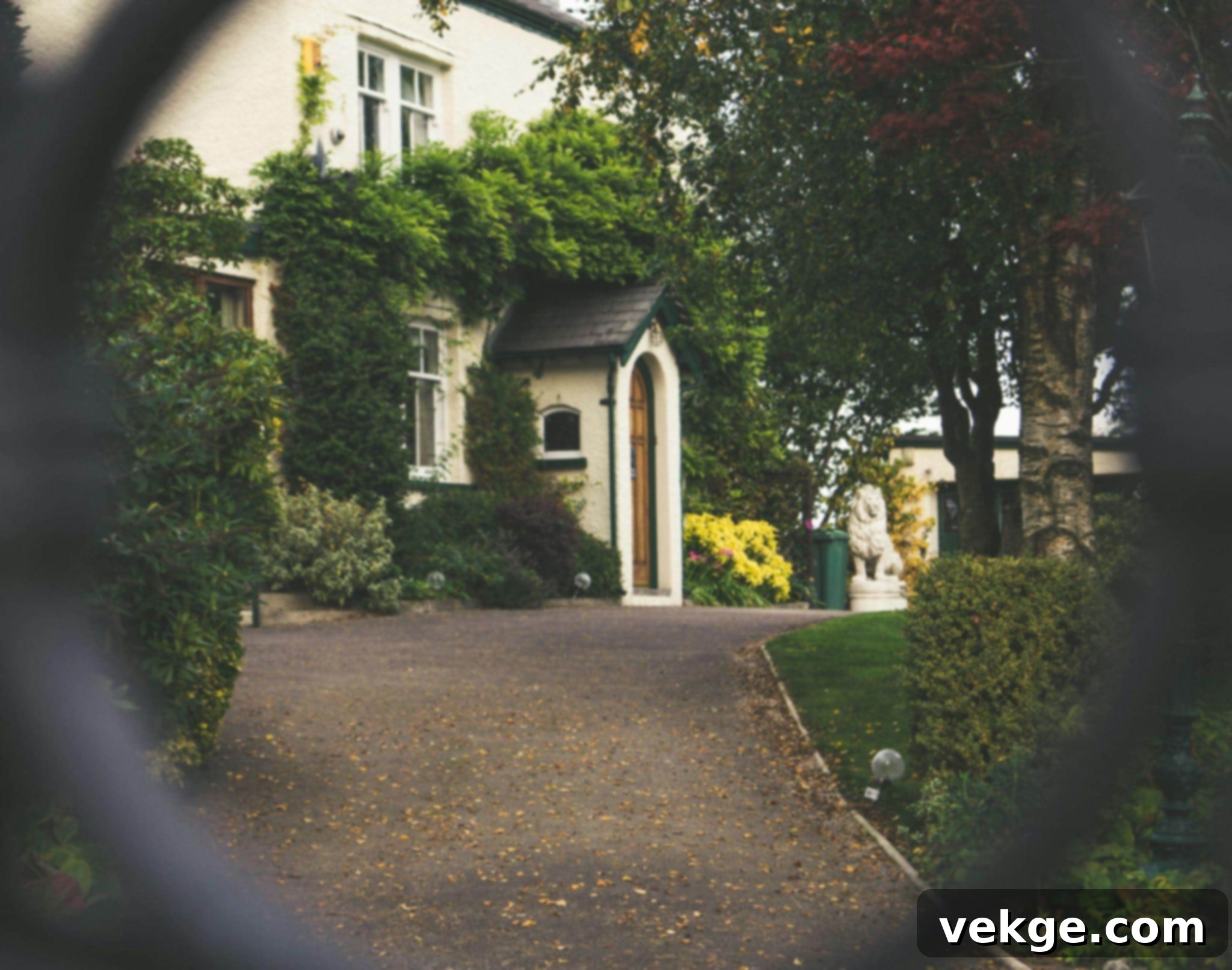Transform Your Outdoor Space: A Beginner’s Comprehensive Guide to Stunning Landscape Design
Embarking on a garden makeover can feel like stepping into a vast, uncharted territory, especially if you’re new to the exciting world of landscape design. The sheer number of decisions, from plant selection to structural placement, can seem overwhelming at first. However, the true essence of creating your dream outdoor oasis lies in the joy of the process itself. It’s an incredibly fulfilling journey that allows you to unleash your creativity, connect with nature, and ultimately craft a space that reflects your personal style and enhances your quality of life.
Before you get carried away with exciting tools like a new electric chainsaw, ready to reshape every tree in sight, it’s crucial to approach your outdoor project with a clear vision and a well-thought-out plan. By adhering to a few fundamental landscape design principles, you can ensure your new garden project blossoms into a stunning reality, avoiding common pitfalls and maximizing your enjoyment every step of the way.
Determine Your Landscape Design Needs & Wants
Starting any landscape design project without a comprehensive understanding of your specific needs and desires for your outdoor space is akin to setting sail without a compass. This initial, introspective phase is perhaps the most critical. Begin by asking yourself what purpose your garden will serve. Is it primarily a vibrant play area for children, a tranquil retreat for quiet contemplation, a productive veggie garden, an ideal spot for outdoor entertaining, or a haven designed to attract local wildlife and pollinators? Your answers to these questions will become the guiding stars for all your subsequent design decisions.
Landscape design experts often recommend starting with a thorough assessment of your existing space. Measure your garden, noting its dimensions, existing features like mature trees, sheds, or patios, and even areas you dislike. Then, let your imagination run wild by creating a few rough sketches. These initial drawings don’t need to be architectural masterpieces; they’re simply a tool for brainstorming. Include all the elements and features you dream of incorporating, such as a cozy fire pit, a serene water feature, new flowerbeds, or a shaded pergola. This iterative sketching process gives you the invaluable freedom to experiment with multiple layouts and combinations without committing to a single plan too early. Involving family members in this brainstorming stage can also bring diverse perspectives and ensure the final design caters to everyone’s enjoyment.
Start Small: Embrace a Phased Approach to Garden Makeovers
The allure of garden makeover television shows, which often depict complete transformations in a single day, can create unrealistic expectations for home projects. Without a massive crew and an endless supply of resources, completely redesigning an entire garden in a short timeframe is simply not achievable for the average homeowner. Creating the landscape of your dreams is, more often than not, a slow, deliberate, and deeply rewarding process.
However, this shouldn’t be seen as a drawback. Instead, view it as an opportunity to truly savor the journey. Rather than fixating on completing everything immediately, dedicate a few focused hours every other day or week to head outside. Enjoy the tangible process of transforming your garden into a slice of paradise, tackling manageable tasks like preparing a flowerbed, planting a new shrub, or meticulously removing unwanted weeds. This phased approach offers numerous benefits: it helps manage your budget effectively, allows you to learn valuable skills as you go, and prevents burnout. More importantly, when you slow down and approach your work with intention and care, you significantly reduce the likelihood of making costly mistakes or resorting to shortcuts that could have negative long-term consequences for your garden’s health and aesthetics. Remember, a beautiful garden is built one thoughtful step at a time.
Location is Key: Understanding Your Garden’s Microclimates
There are few things more disheartening in landscape design than meticulously crafting the perfect outdoor seating area, only to discover it’s perpetually shrouded in shade, or conversely, bakes in the afternoon sun. When deciding on the precise placement of plants, seating areas, pathways, and other garden structures, a thorough understanding of your garden’s sun and wind patterns throughout the day and across different seasons is absolutely critical. A patio that receives abundant afternoon sun might become unbearably hot during the peak summer months, rendering it unusable. Similarly, a strong, persistent wind whipping around a specific corner of your house could quickly extinguish any romantic dreams of cozy evenings spent around a fire pit.
Neglecting to consider these vital environmental factors is a common and often costly mistake made by many beginner landscapers. A thoughtful landscape design must account for the microclimates within your own yard. Observe where the sun rises and sets, how shade patterns shift, and from which direction prevailing winds typically blow. This might involve keeping a simple log or creating a sun map over a few days or weeks. Understanding these patterns will ensure that every element in your outdoor space, from sun-loving perennials to shaded reading nooks, is situated to thrive and be fully enjoyed, preventing you from underutilizing or even abandoning certain aspects of your carefully designed garden.

Establish a Focal Point: Guiding the Eye in Your Garden
In any well-designed space, whether indoors or outdoors, the establishment of a focal point or a series of central elements is paramount. These focal points act as visual anchors, drawing the eye and providing a starting point around which other design elements are thoughtfully arranged and utilized. This could manifest as a showstopping sculpture, a majestic towering tree, an array of vibrantly colorful blooming shrubs, or even a strategically placed water feature. A well-chosen focal point adds drama, interest, and a sense of purpose to your garden.
For gardens that are relatively flat and square, traditional design ideas featuring clean, simple lines and a single strong focal point can achieve a casual yet polished finish. However, for more expansive gardens with multiple distinct areas, varying altitudes, or a naturally free-flowing structure, there is a greater opportunity to incorporate several unique features. Imagine a serene small pond reflecting the sky, a charming gazebo offering a panoramic view of the garden, a whimsical fairy garden designed to enchant children, or an area specifically dedicated to growing native wildflowers to support the vital bee community and other essential pollinators. Each of these elements can serve as a smaller focal point within a larger, cohesive design, guiding visitors through different “rooms” of your outdoor sanctuary and enhancing the overall narrative of your landscape.
Find Proportion, Scale, and Unity in Landscape Design
In the realm of landscape design, proportion is a critical concept that dictates the harmonious relationship between the size of individual components or groups of different items (such as plants or structures) and the overall size and lay of the land itself, as well as the design as a whole. A well-proportioned garden feels balanced and natural, whereas a design that is out of proportion will inevitably lack flow, transition, and cohesion between its elements, often appearing disjointed and disconnected.
Consider, for instance, a 5-foot garden wall. While it might perfectly complement a large, imposing house, it could make a smaller home look even more diminutive, as the height of the wall closely mirrors the height of the house, creating an overwhelming effect. This common issue can be artfully remedied by planting a row of taller trees or a tiered hedge between the house and the wall. This creates a gradual change in height, fostering a sense of natural transition and flow. Furthermore, understanding scale—how elements relate to human size—is equally important. A tiny bench in a vast lawn will feel lost, just as an oversized statue in a small courtyard can feel oppressive.
Beyond proportion, unity in landscape design acts as the invisible thread that weaves all the disparate elements of your garden into a cohesive whole, much like the binding structure of a tapestry. It’s the glue that ensures your garden feels complete and harmonious. Achieving unity involves more than just consistent sizing; it encompasses repeating forms, textures, and a consistent color palette throughout your space. By thoughtfully repeating the same size, form, and color in various elements—be it the shape of your pavers, the type of foliage on your plants, or the color of your outdoor cushions—you can create a powerful sense of unity and rhythm that elegantly supports your main design theme, inviting the eye to move smoothly across the landscape and enhancing the overall aesthetic appeal.

Be Open to Change: The Evolving Nature of Your Garden
Unless you are unequivocally dedicated to one specific design style or idea from the outset, it’s essential to cultivate an honest and flexible mindset regarding your landscape project. Be willing to critically assess whether a particular element is realistically going to integrate and function as intended within your overall vision, both now and in the future. Landscape design is not a static endeavor; it’s an ongoing, evolving process.
While it might be relatively straightforward to redesign flowerbeds, swap small shrubs, or adjust garden decor as your personal style and preferences shift over time, removing more permanent structures like pergolas, large paved areas, or mature trees can quickly become a significantly costly and painstaking ordeal. Therefore, it’s wise to find creative ways to experiment with ideas as you progress. Perhaps use temporary planters for new plants, or movable furniture to test different seating arrangements before committing to permanent installations. Allow yourself the freedom to edit, adapt, and even completely change aspects of your design as needed. Your garden will grow and mature, and so too will your understanding and preferences. Embracing this adaptability ensures that your outdoor space remains a source of joy and beauty for many years to come, truly reflecting your evolving lifestyle and taste.
Cultivating Your Dream Garden: A Journey of Discovery
Transforming your outdoor space through landscape design is a truly enriching experience that extends far beyond simply planting flowers or moving dirt. It’s a journey of self-expression, a connection with nature, and a process that allows you to craft a personal sanctuary. By thoughtfully determining your needs, starting with manageable phases, understanding your garden’s unique environmental conditions, establishing clear focal points, and adhering to principles of proportion and unity, you lay a strong foundation for success.
Most importantly, remember to approach your landscape project with an open mind and a willingness to learn and adapt. Gardens are living, breathing entities that evolve over time, much like our own desires and needs. Embrace the creative freedom, enjoy the process, and take pride in watching your vision come to life, one thoughtful decision at a time. Your dream garden is not just a destination; it’s a beautiful, ongoing adventure.
